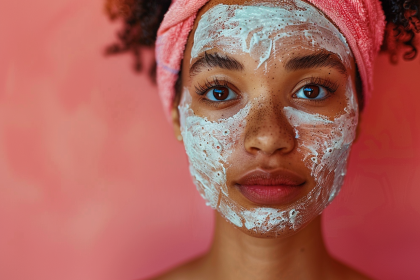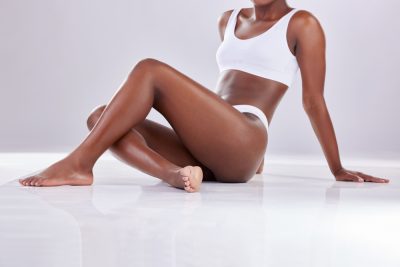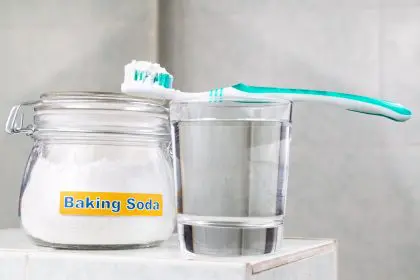From razor bumps to painful deep cysts, here’s how to identify what you’re dealing with and the science-backed solutions for smooth, clear skin
Ingrown hair cysts rank among the most frustrating skin conditions, affecting people across all demographics and causing both physical discomfort and cosmetic concerns. Despite their prevalence, many suffer silently or use remedies that worsen the condition.
This comprehensive guide explores the six distinct types of ingrown hair cysts, their unique causes, and the most effective science-backed treatments. Whether you’re dealing with recurring razor bumps or more serious cystic formations, understanding the underlying mechanisms offers the key to prevention and successful treatment.
The mechanics behind trapped hairs
Ingrown hair cysts develop through a deceptively simple process with potentially complicated outcomes. Unlike normal hair growth that emerges straight from the follicle through the skin surface, ingrown hairs curve back and penetrate the surrounding skin, creating inflammation and sometimes infection.
The body recognizes this re-entry as a foreign invasion, triggering an immune response that creates redness, swelling, and sometimes pus formation. In more severe cases, the body forms a protective cyst wall around the offending hair and accumulated debris.
This process varies significantly based on hair texture, skin type, and grooming methods. Curly or coiled hair naturally has a greater tendency to grow back into the skin rather than outward. Thicker hair can create more substantial inflammation when ingrown, while sensitive skin may react more dramatically to even minor irritation.
The 6 types of ingrown hair cysts and their characteristics
While often discussed as a single condition, ingrown hair cysts actually manifest in several distinct forms, each with unique characteristics and treatment needs:
- Razor bumps occur immediately after hair removal
These common, raised red or flesh-colored bumps appear 1-3 days after shaving, waxing, or other hair removal methods. They typically measure 2-4mm in diameter and cause mild to moderate discomfort.
Razor bumps predominantly affect the face, neck, legs, and bikini area – regions subjected to frequent hair removal. They typically resolve within 5-10 days with proper care but may leave temporary hyperpigmentation, especially in darker skin tones.
- Pilonidal cysts develop in high-pressure areas
These larger, more serious cysts form in the cleft between buttocks, where pressure, friction, and hair can create deep tissue inflammation. Unlike typical ingrown hairs, pilonidal cysts can grow quite large (1-5cm) and often contain multiple embedded hairs.
Pilonidal cysts cause significant pain, particularly when sitting, and may develop draining sinuses if left untreated. They affect men approximately three times more frequently than women, with peak occurrence between ages 15-30.
- Epidermoid cysts create dome-shaped bumps
These slow-growing, movable bumps develop when surface skin cells become trapped beneath the skin surface alongside hair follicles. They typically measure 0.5-5cm in diameter and have a characteristic central pore or small opening.
These cysts feel firm but slightly compressible and may occasionally emit a thick, cheese-like substance with an unpleasant odor. While they can appear anywhere on the body, they most commonly develop on the face, neck, back, and genital area.
- Pilar cysts form exclusively on the scalp
These smooth, round growths occur specifically on the scalp when hair follicle walls develop abnormally. They typically measure 0.5-5cm in diameter, feel firm to the touch, and move freely beneath the skin when pressed.
Unlike other types, pilar cysts often have a genetic component, with approximately 70% of patients reporting family history. They grow slowly over months or years and rarely cause pain unless infected or physically irritated.
- Steatocystomas affect oil-producing glands
These small, yellowish bumps develop from sebaceous glands rather than directly from hair follicles. They typically measure 2-20mm, feel soft and malleable, and may contain an oily, yellowish fluid.
Steatocystomas often appear in groups rather than as isolated lesions, primarily affecting the chest, neck, armpits, and groin. They rarely cause pain but may create cosmetic concerns when numerous cysts develop in visible areas.
- Eruptive vellus hair cysts target fine body hair
These small, asymptomatic bumps develop around fine, unpigmented body hairs rather than terminal hairs. They typically appear as multiple 1-3mm flesh-colored or slightly reddish papules, primarily on the chest and abdomen.
These cysts affect all skin types but present differently based on skin tone – appearing slightly reddish on lighter skin and purplish on darker skin. They often resolve spontaneously over months as the cyst wall naturally degrades, releasing the trapped hair.
Why traditional advice often fails
Much conventional wisdom about treating ingrown hair cysts proves ineffective or potentially harmful. The traditional advice to exfoliate aggressively can actually worsen inflammation by irritating already sensitized skin. Similarly, attempts to “release” trapped hairs with tweezers or needles frequently introduce bacteria and worsen infection risk.
Even some medical approaches warrant reconsideration. The routine prescription of topical antibiotics for mildly inflamed cysts may contribute to antibiotic resistance without addressing the underlying mechanical issue of the trapped hair.
Instead, research supports a more nuanced approach based on the specific cyst type, location, and severity. This targeted strategy minimizes unnecessary intervention while maximizing resolution rates.
Effective treatment approaches based on cyst type
Management strategies vary significantly between cyst types, with successful treatment depending on proper identification and targeted intervention:
- For razor bumps
Gentle chemical exfoliation with products containing glycolic or salicylic acid helps prevent keratinization that traps growing hairs. Applied every 2-3 days, these products show 60-70% reduction in new bump formation within 2-3 weeks.
For existing bumps, warm compresses applied for 10 minutes twice daily increase blood flow and reduce inflammation. Temperature matters – studies show 104-108°F (40-42°C) provides optimal therapeutic benefit without scalding risk.
Hydrocortisone cream (0.5-1%) applied twice daily for 2-3 days can significantly reduce inflammation. Research demonstrates approximately 30% reduction in redness and swelling within 48 hours of consistent application.
- For pilonidal cysts
These serious cysts typically require medical intervention. Conservative management with warm compresses and antibiotics resolves approximately 40-50% of cases without surgical intervention.
For recurrent or severe cases, surgical options include incision and drainage (effective for immediate relief but with 40-60% recurrence rates) or more comprehensive excision procedures with lower recurrence but longer recovery periods.
Prevention proves particularly important, with studies showing significant reduction in recurrence through regular cleansing, hair removal in the affected area, and avoiding prolonged sitting.
- For epidermoid cysts
Small, uninfected epidermoid cysts often require no treatment. For larger or cosmetically concerning cysts, complete surgical excision offers the lowest recurrence rate (approximately 5-10% compared to 30-50% with simple drainage).
Newer minimally invasive techniques using small punch excisions show promise with shorter recovery times and minimal scarring. These procedures demonstrate 85-90% success rates while allowing patients to resume normal activities within 24-48 hours.
- For pilar cysts
These scalp cysts rarely require treatment unless they cause discomfort or cosmetic concerns. When intervention becomes necessary, complete surgical excision provides definitive treatment with minimal recurrence risk.
Unlike other cyst types, pilar cysts have well-defined capsules that facilitate complete removal. Successful excision results in cure rates exceeding 90% with proper technique.
- For steatocystomas
Treatment options include extraction of individual cysts through small incisions or laser therapy for multiple lesions. CO2 laser techniques show approximately 70-80% improvement with minimal scarring for widespread steatocystoma multiplex.
For isolated lesions, mini-punch excision techniques developed specifically for steatocystomas demonstrate excellent cosmetic outcomes with approximately 95% patient satisfaction in clinical studies.
- For eruptive vellus hair cysts
These typically asymptomatic cysts often resolve spontaneously over 6-18 months. For persistent cases, topical retinoids (tretinoin 0.025-0.05%) applied nightly accelerate resolution through increased cell turnover.
Studies demonstrate approximately 60-70% improvement after 12 weeks of consistent retinoid application. Higher concentrations increase efficacy but also irritation risk, making gradual introduction advisable.
Prevention strategies that actually work
While complete prevention remains challenging, several evidence-based strategies significantly reduce ingrown hair cyst formation:
Hair removal technique modification shows impressive results. Shaving with the grain rather than against it reduces ingrown hair formation by approximately 50%. Using single-blade razors rather than multi-blade systems decreases razor bumps by approximately 30% by avoiding the “lift-and-cut” mechanism that encourages subdermal hair growth.
Pre-shave preparation proves equally important. Applying warm water and emollient shaving products for 2-3 minutes before shaving softens hair and reduces trauma during cutting. Studies demonstrate this simple preparation step decreases ingrown hair formation by approximately 35%.
Laser hair removal offers long-term prevention. For those with recurring problems, laser hair reduction shows 80-95% reduction in ingrown hairs after a complete treatment series. While initially more expensive than topical approaches, the long-term cost-effectiveness often proves superior for chronic sufferers.
Clothing choices significantly impact certain cyst types. For pilonidal cysts, wearing loose-fitting clothing reduces recurrence rates by approximately 40% by decreasing friction and pressure in vulnerable areas.
Proper wound care after hair removal creates substantial benefits. Applying cool compresses immediately after shaving or waxing reduces inflammation by approximately 25%. Following with alcohol-free moisturizers containing ceramides helps maintain skin barrier function and decreases ingrown hair formation by approximately 30%.
When to seek medical attention
While most ingrown hair cysts resolve with proper home care, certain warning signs warrant prompt medical evaluation:
- Rapid growth or significant size increase suggests potential infection or more serious underlying condition
- Severe pain disproportionate to the visible inflammation indicates deeper tissue involvement
- Spreading redness beyond the immediate cyst area signals infection progression
- Fever or systemic symptoms suggest more widespread infection requiring antibiotics
- Recurrent cysts in the same location may indicate structural issues requiring specialized treatment
Early intervention for these concerning signs prevents complications and improves treatment outcomes. Healthcare providers can offer prescription-strength treatments, drainage procedures, or referrals to dermatology specialists when appropriate.
The psychological impact deserves attention
The visible nature of many ingrown hair cysts creates significant psychological impact, particularly when they occur in cosmetically sensitive areas like the face or neck. Studies show approximately 30-40% of individuals with recurrent ingrown hairs report negative effects on self-confidence and social interactions.
This emotional component warrants consideration when developing treatment plans. For some individuals, more aggressive prevention strategies or definitive treatments like laser hair reduction may be justified based on psychological impact rather than physical severity alone.
Similarly, addressing post-inflammatory hyperpigmentation that often follows cyst resolution proves important for complete treatment satisfaction, particularly for individuals with darker skin tones who experience more pronounced pigmentary changes.
By understanding the specific mechanisms behind different ingrown hair cyst types and implementing targeted prevention and treatment strategies, most individuals can effectively manage this common but frustrating skin condition. With proper care, the physical discomfort and cosmetic concerns associated with ingrown hair cysts can be minimized or eliminated entirely.

















